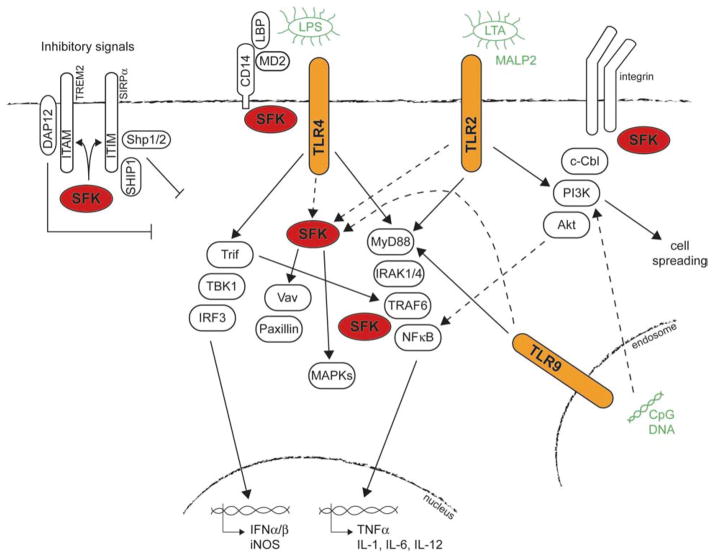Figure 3.
Involvement of SFKs in TLR signaling in macrophages. Signaling downstream of TLRs 2, 4 and 9 in response to their respective ligands leads to activation of MAP kinases, production of cytokines, and actin cytoskeletal changes. Studies mainly using SFK inhibitors such as PP1, PP2 and SU6656 have shown that SFKs are involved in many of these responses, however experiments with SFK-deficient mice have produced different results (indicating no differences or even paradoxical increases in TLR type signaling) hence the controversy regarding the role of SFKs in TLR signaling. There are several ways in which SFKs may modulate TLR signaling, both positively and negatively, rather than being directly involved. CD14 binds to SFKs, which could recruit the SFKs to TLR4 during LPS stimulation and therefore be involved in proximal TLR signaling events, such as phosphorylation of substrates such as Vav and paxillin. TLR2 and 9 do not require co-receptors, but may recruit SFKs by clustering with other receptors such as integrins that are known to signal through SFKs. SFKs have also been shown to act more distal to TLRs, possibly interacting with downstream molecules such as TRAF6. Furthermore, through phosphorylation of ITAMs or ITIMs, SFKs can provide signals that down-modulate signaling through TLRs. Solid arrows indicate well-defined pathways, while dotted arrows indicate potential roles by which SFKs may modulate specific TLR pathways.

